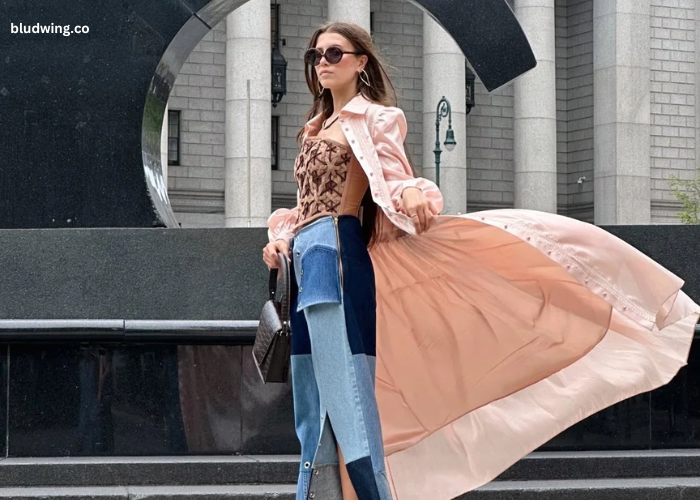In recent years, the fashion industry has undergone a massive transformation. With rising concerns about the environment, the global fashion scene has begun to embrace more sustainable practices, offering consumers an opportunity to make mindful choices about how they dress. Sustainable fashion is no longer just a trend; it’s a movement that aims to reduce the environmental impact of clothing production and promote ethical labor practices.
As we enter 2025, the demand for stylish, eco-conscious clothing continues to grow. Consumers are looking for ways to express their individuality while also supporting brands that prioritize sustainability and social responsibility. Fortunately, sustainable fashion has come a long way in offering not just eco-friendly options but also fashionable designs that make a statement. In this article, we’ll explore how you can dress stylishly while making responsible fashion choices.
Key Points:
- Sustainable fashion focuses on eco-friendly materials, ethical production practices, and reducing waste.
- More brands are offering stylish, sustainable options that don’t compromise on fashion.
- The rise of second-hand shopping and upcycling is helping reduce fashion’s environmental footprint.
What Are the Key Principles of Sustainable Fashion?
Sustainable fashion is all about making choices that are better for the planet and people. When building a wardrobe with sustainability in mind, there are a few key principles to keep in mind. These principles guide consumers toward clothing that minimizes environmental impact while also supporting ethical production practices.
1. Eco-Friendly Fabrics
One of the most important aspects of sustainable fashion is the use of eco-friendly fabrics. Traditional textile production is resource-intensive, often requiring large amounts of water and chemicals that harm the environment. On the other hand, eco-friendly fabrics are made using more sustainable methods, often from renewable resources or recycled materials. Here are some of the most popular eco-friendly fabrics in sustainable fashion:
- Organic Cotton: Grown without pesticides or harmful chemicals, organic cotton uses less water and energy compared to conventional cotton farming.
- Hemp: A durable, naturally biodegradable fabric that requires little water and pesticides to grow.
- Tencel (Lyocell): Made from wood pulp, Tencel is produced using a closed-loop process that recycles water and solvents, making it a more sustainable option.
- Recycled Fabrics: Materials like recycled polyester, made from plastic bottles or old garments, are being used to create new clothes while reducing waste.
By choosing clothing made from these materials, you are reducing your environmental footprint and supporting brands that prioritize sustainability.
2. Ethical Production Practices
Sustainability is not just about the materials used; it’s also about the production process. Ethical production practices ensure that clothing is made in a way that respects both the environment and the workers involved. This includes fair wages, safe working conditions, and responsible sourcing of materials.
Brands that follow ethical production practices often provide transparency about their supply chain, ensuring that consumers can make informed choices. Look for certifications like Fair Trade, GOTS (Global Organic Textile Standard), and B Corp to identify brands that prioritize workers’ rights and environmental impact.
3. Waste Reduction
The fashion industry is notorious for producing massive amounts of waste. From unsold inventory to clothing that ends up in landfills, the waste generated by the industry contributes significantly to pollution. Sustainable fashion focuses on reducing this waste by encouraging practices like upcycling, recycling, and producing items that have a longer lifespan.
Brands are now designing clothes with durability in mind, using high-quality materials that will last longer and reduce the need for frequent replacements. Additionally, second-hand shopping and clothing swaps are becoming increasingly popular, providing more sustainable alternatives to fast fashion.
How to Build a Stylish and Sustainable Wardrobe
Building a stylish, sustainable wardrobe doesn’t mean sacrificing fashion for eco-consciousness. In fact, 2025 is shaping up to be an exciting year for sustainable fashion, with more brands offering chic, eco-friendly clothing options than ever before. Here are some tips for curating a wardrobe that is both fashionable and responsible:
1. Invest in Timeless Pieces
One of the best ways to build a sustainable wardrobe is by investing in timeless pieces that won’t go out of style. Classic items like a well-tailored blazer, a little black dress, and a high-quality leather handbag will serve you for years to come, reducing the need for constant shopping and helping you avoid fast fashion.
When shopping for timeless pieces, opt for high-quality materials like organic cotton, wool, or sustainably sourced leather. These materials not only last longer but also have a lower environmental impact.
2. Embrace Second-Hand Shopping
Second-hand shopping is an excellent way to build a sustainable wardrobe. Thrift stores, consignment shops, and online marketplaces like Poshmark and Depop offer a wide range of stylish, pre-loved clothing. By shopping second-hand, you are giving clothes a second life, helping reduce textile waste, and saving money in the process.
Vintage pieces are also a great way to find unique and timeless items that stand out. Whether it’s a retro jacket or a vintage handbag, second-hand shopping allows you to express your personal style while being mindful of your environmental impact.
3. Mix and Match for Versatility
When building a sustainable wardrobe, it’s important to focus on versatility. Choose clothing items that can be mixed and matched to create multiple outfits. Neutral colors, simple patterns, and versatile silhouettes will make it easier to create stylish looks without needing to buy new clothes every season.
A capsule wardrobe is a great way to approach this. This method involves curating a small collection of high-quality, timeless pieces that can be worn in various combinations. By focusing on quality over quantity, you’ll have a wardrobe that is both stylish and sustainable.
What Are the Best Sustainable Fashion Brands in 2025?
As sustainability becomes more important to consumers, many fashion brands are stepping up to offer eco-friendly and ethically made clothing. Here are some of the best sustainable fashion brands to look out for in 2025:
1. Patagonia
Patagonia is a leader in sustainable fashion, known for its commitment to using recycled materials, fair labor practices, and environmental activism. The brand’s clothing is built to last, and it also offers a repair program to help extend the life of your garments.
2. Everlane
Everlane is a popular brand that focuses on transparency and ethical production. The brand offers a wide range of stylish, minimalist clothing made from sustainable materials like organic cotton and recycled fabrics. Everlane’s “Choose What You Pay” program also allows customers to make more conscious purchasing decisions.
3. Reformation
Reformation is a fashion-forward brand that specializes in eco-friendly clothing. The brand uses sustainable fabrics like Tencel and recycled polyester and focuses on reducing waste through a made-to-order production model. Reformation offers everything from casual wear to evening dresses, all made with sustainability in mind.
4. Stella McCartney
Stella McCartney is a luxury fashion brand known for its commitment to sustainability. The brand uses cruelty-free materials, such as plant-based leather and organic cotton, and it advocates for ethical production practices. Stella McCartney proves that sustainable fashion can be both luxurious and environmentally responsible.
Conclusion: Dressing Responsibly, Looking Fabulous
Sustainable fashion is all about making thoughtful choices that benefit both the planet and people. By investing in eco-friendly materials, supporting ethical production practices, and reducing waste, you can build a wardrobe that is stylish and responsible. The trends of 2025 show that it’s possible to look fabulous while making a positive impact on the environment.
Whether you choose to shop second-hand, embrace timeless pieces, or support sustainable brands, your fashion choices can make a difference. In the end, dressing sustainably isn’t just about what you wear—it’s about supporting a movement toward a more ethical, eco-conscious world.
FAQ’s
1. What is sustainable fashion?
Sustainable fashion refers to clothing made from eco-friendly materials and produced using ethical practices, reducing environmental impact and promoting fair labor conditions.
2. How can I build a sustainable wardrobe?
Invest in timeless, high-quality pieces, shop second-hand, and focus on versatility by selecting items that can be mixed and matched for different looks.
3. Are there fashionable sustainable brands?
Yes, many brands like Patagonia, Everlane, Reformation, and Stella McCartney are known for their stylish, eco-friendly clothing lines that prioritize sustainability and ethical practices.
4. How does second-hand shopping contribute to sustainability?
Second-hand shopping reduces textile waste, extends the life of clothing, and lessens the demand for new production, making it an eco-friendly alternative to fast fashion.
5. What are some eco-friendly fabrics used in sustainable fashion?
Popular eco-friendly fabrics include organic cotton, hemp, Tencel, and recycled materials like polyester made from plastic bottles.




